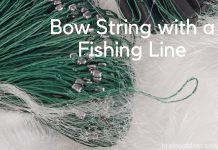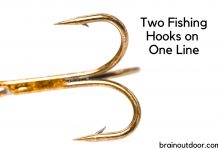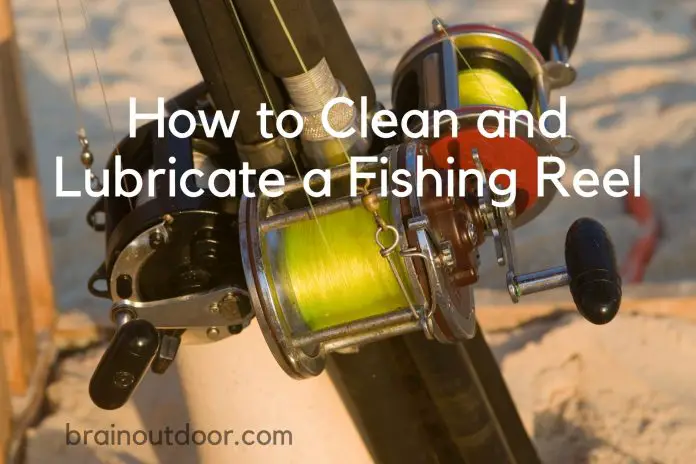Cleaning and lubrication are part of proper maintenance that needs to get done once in a while. A well-maintained reel won’t experience problems when catching fish. The fishing reel and its components collect a lot of dirt, dust, and salt from the seawater. You are required to clean and lubricate it to make it remain in top condition for your fishing activities. Here are ways on how to clean and lubricate a fishing reel.
Materials for Cleaning
Cleaning a reel does not require many tools. You will need a few things like a toothbrush, cotton swab, screwdriver, cleaning solutions, and a lubricant compatible with the type of fishing reel you have. You can use a toothbrush in place of a cotton swab depending on which one will clean each component best.
Step:1 Clean the Exterior
The first place you will want to clean is the outer surface of the reel before getting to the inside. When you fish, this part accumulates more salt, dirt, and any other particles. If you mostly catch fish in salty waters, you might want to rinse off the saltiness before it enters the inner part. Therefore, clean and rinse before you open the reel.

Wash in warm soapy water to remove the debris and then wipe off with a clean towel. Use a microfiber cloth to remove any left salt residue. At the very end, after you have cleaned the inner components, do not forget to lubricate the exterior to protect it against corrosion.
Step:2 The Internal Components
To access these parts, you will have to open the reel and lubricate the pieces one by one. Take your time to clean them before starting to oil them.
Step:3 Disassembling the Fishing Reel
Turn the reel counterclockwise to remove it from the rod. Take off the spool and remove the screws with a screwdriver. Remove the plate to access the inner parts of the reel that you will clean and oil afterward. Ensure you place them aside in the order of removal to avoid confusion when connecting them back. Please place them in a safe position where they do not risk getting lost.
Remove the handle assembly with a flathead screwdriver. You will need to use a wrench to remove the handle nut, the drag, the spring, and the washers. Remove the remaining parts; side plate, drive washers & gears, the drag space, and yokes. You will need to lubricate them as you put them back in their original position.
Step:4 Cleaning the Fishing Reel
Do not clean your fishing reel using saltwater. Saltwater can damage and render it useless. That is why it is often recommended to wash your reel right away after fishing in saltwater.
You will need to prevent water intrusion before cleaning the fishing reel. To do this, ensure you tighten the drag down. Tightening prevents water from getting inside the drag system. If you immerse it in water or run it on running water with high pressure, you will cause damage to the reel. If you want to wash it in running water, do this with fresh water, but the water’s pressure needs to below.
Rinse the fishing reel with fresh and clean water. After that, wipe with a clean and dry clothing piece. Spray a lubricant on a cloth or cotton swabs and use it to wipe to create a protectant coating.

Step:5 Cleaning the Spool
To remove the spool from the reel, use the disassembling method above. Remove the drag knob by unscrewing it to remove it from the body of the fishing reel.
Step:6 Cleaning after Saltwater Use
As aforementioned, fishing reels used in salty water require frequent cleaning than those used in freshwaters. With freshwater reels, you can wash them periodically like monthly or annually. The other ones need you to frequently clean them to prevent the salt from accumulating and damaging the parts.
Immerse the reel in clean, fresh water after every fishing time. This way, no salt will get to the reel’s component to damage them. After submerging it in water, you will use the standard method above to clean it thoroughly.
Step:7 Rinse with Clean Water
When done cleaning the components, give the fishing reel some rinsing with clean water. Remember you can use running water but shouldn’t be high pressure to cause damage. To be on the safer side, use a spray bottle to control the amount and pressure of the rinsing water.
Step:8 Lubricating a Fishing Reel
Lubricating your reels are part of the maintenance and care needed. Open the bail and after getting it cleaned and dry. Please start with the ball joint and apply a few drops of the lubricant to it.
Some drag washers can be lubricated while others do not need lubrication. Check with the manufacturer to learn if the one you should be grease or stay grease-free.
Step:9 Lubricating the Handle
Remove the locking system on the reel. Apply the lubricant on the handle, the reel’s head, the shaft, and the rotation seat. Lastly, lubricate the joint that makes the handle be folded.
Step:10 Reinspect
Countercheck to see the components are in good condition before you reassemble them. Parts that have gone through severe wear and tear should get replaced. Reinstall the drag gears, drag washers, yoke, and pinion. Then put back the yoke springs, the side plate and its screws, star drag, washer, and finally the handle. In case you are unsure how to put them back, do research online or consult an expert to help you out.
Disassemble the reel to access the internal parts for better cleaning. To do this method quickly, you can choose to clean each piece and lubricate before moving to the next. The second option can be cleaning them first, setting them aside, and then finishing with lubrication as you place them back. Ensure no part is left uncleaned and unoiled. Fishing reels come in three types, and each requires a different approach when opening to access the elements. All said and done, as you go fishing, always remember to take care of the reel regularly.
































